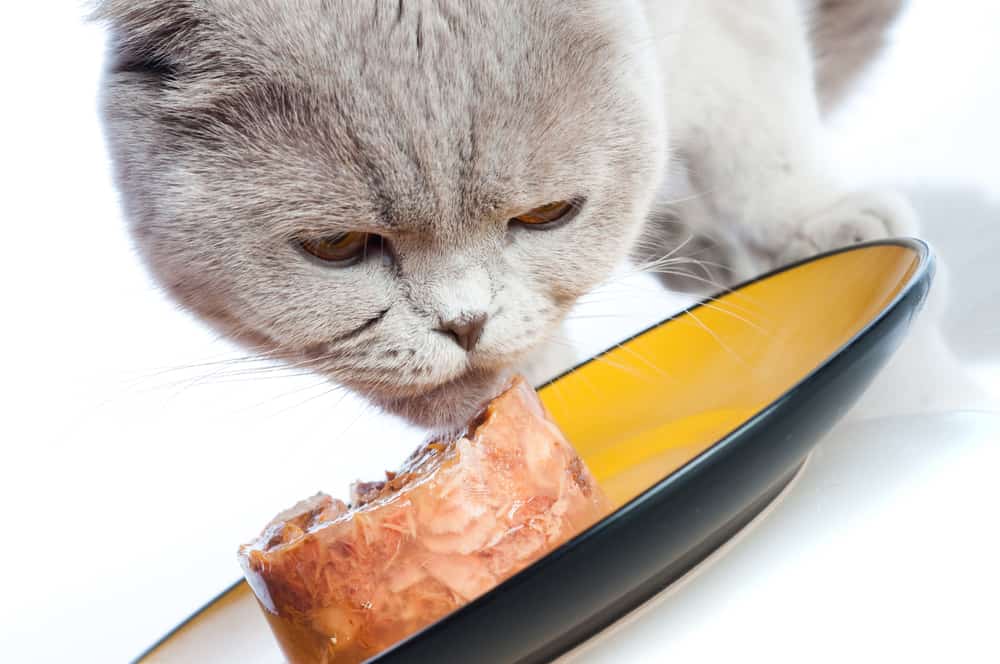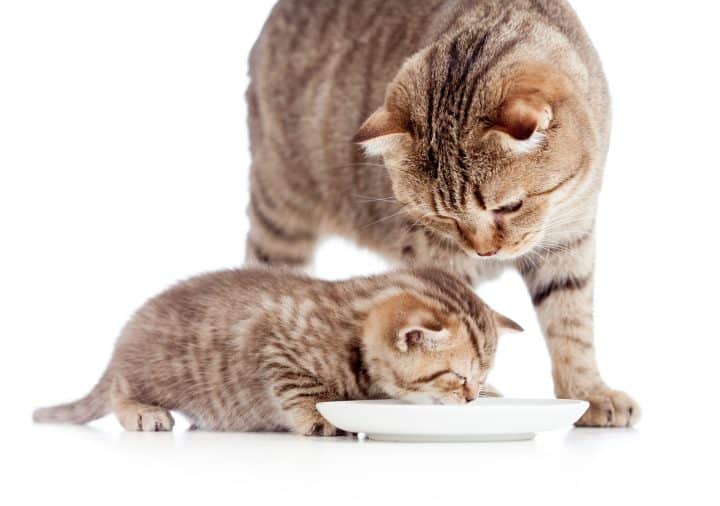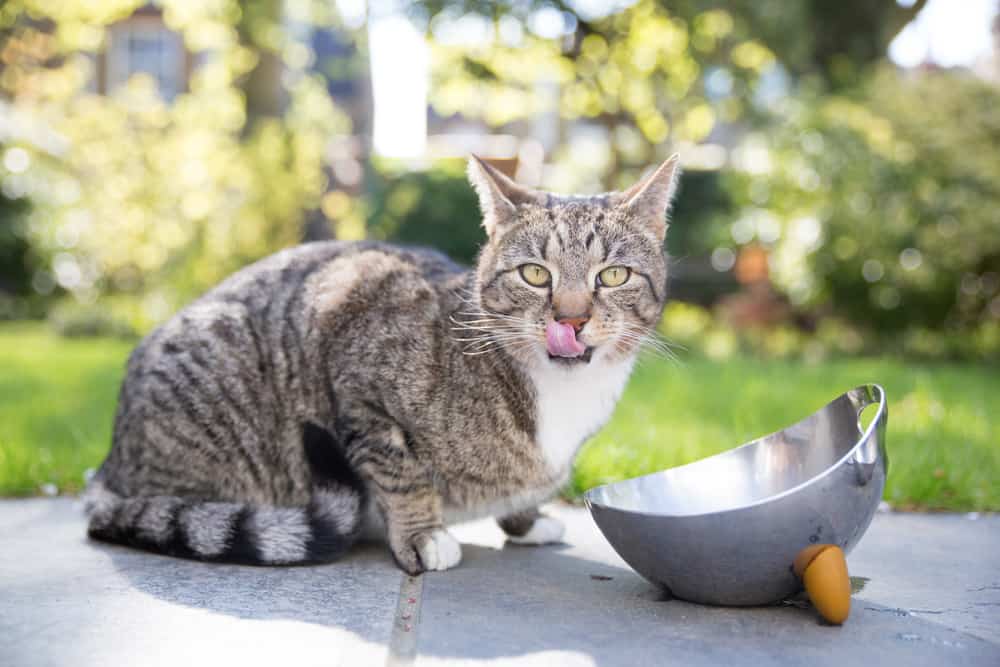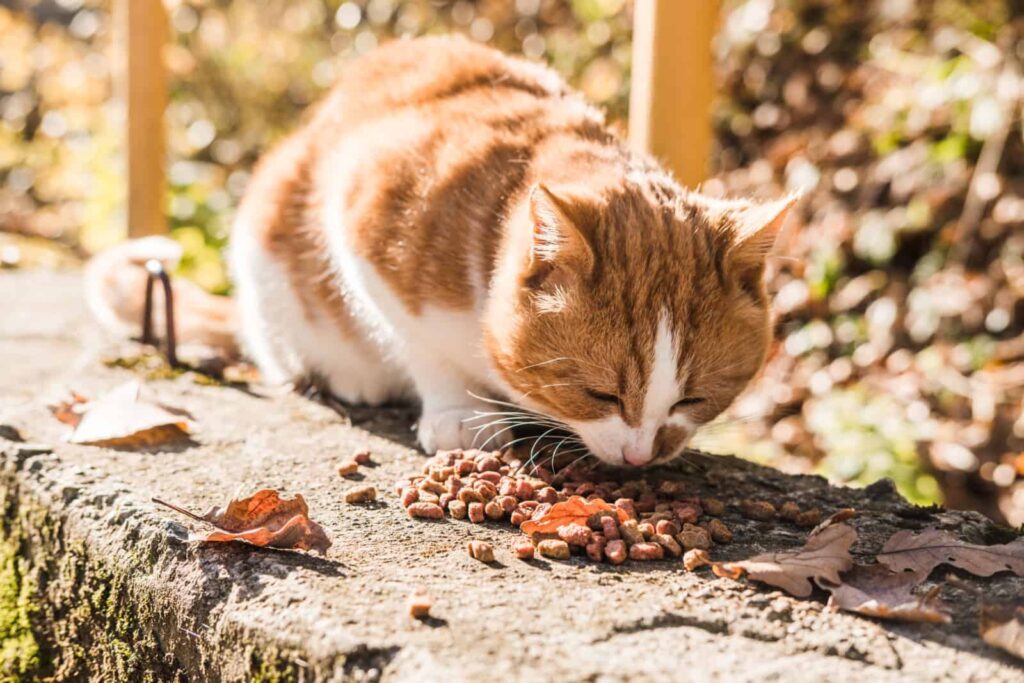In this post:
When you think of a Ragdoll cat breed, you imagine a gorgeous white furr ball, am I right? A Ragdoll cat has a fuzzy exterior and a muscular interior.
Due to its size and general increased need for love and care, Ragdoll cat owners frequently worry about their pets' eating patterns, food intake, what exactly to feed their cute little stomachs, is animal protein important, when to include adult food and so on.
That’s why we prepared a Ragdoll feeding chart so any cat parent can see how much and what kind of food they should feed their Ragdoll cats and therefore take great care about their cat’s health.
Ragdoll Feeding Chart By Body Weight
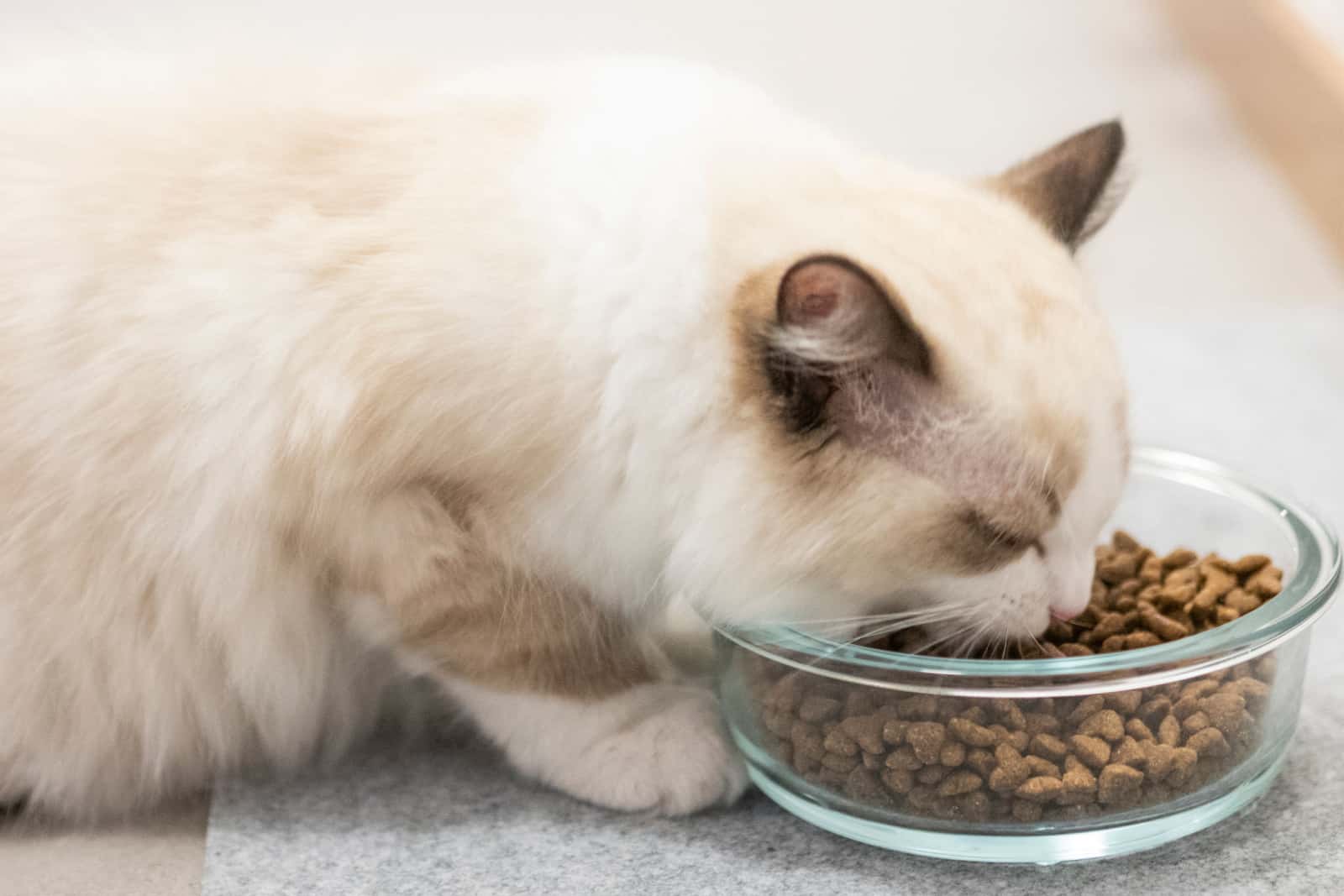
A variety of foods with a high protein and micronutrient content are necessary for ragdoll cats. Not just any meat supplier will do; they want well-known ones who can clearly identify the animal and organ from which the meat was sourced.
Make an effort to select items that contain the least amount of grain. This doesn’t mean that your Ragdoll cat needs a special diet, but rather organized with all the nutritional requirements.
Let’s check now the Ragdoll feeding chart so you can have an overall insight into the amount of food your Ragdoll cat should eat:
| Weight (Ibs) | Caloric Intake | Weight (kg) |
|---|---|---|
| 2 lbs | 162 kcal/day | 0.9 kg |
| 3 lbs | 225 kcal/day | 1.4 kg |
| 4 lbs | 272 kcal/day | 1.8 kg |
| 5 lbs | 327 kcal/day | 2.3 kg |
| 6 lbs | 369 kcal/day | 2.7 kg |
| 7 lbs | 419 kcal/day | 3.2 kg |
| 8 lbs | 457 kcal/day | 3.6 kg |
| 9 lbs | 504 kcal/day | 4.1 kg |
| 10 lbs | 541 kcal/day | 4.5kg |
Ragdoll Feeding Chart By Age

| Weight (Ibs) | Caloric Intake | Weight (kg) |
|---|---|---|
| 2 lbs | 162 kcal/day | 0.9 kg |
| 3 lbs | 225 kcal/day | 1.4 kg |
| 4 lbs | 272 kcal/day | 1.8 kg |
| 5 lbs | 327 kcal/day | 2.3 kg |
| 6 lbs | 369 kcal/day | 2.7 kg |
| 7 lbs | 419 kcal/day | 3.2 kg |
| 8 lbs | 457 kcal/day | 3.6 kg |
| 9 lbs | 504 kcal/day | 4.1 kg |
| 10 lbs | 541 kcal/day | 4.5kg |
Owners of ragdoll cats frequently inquire about how much to feed the kittens, which is the topic of this post.Large and docile cats called ragdolls typically need a lot of care and attention.
Ragdolls typically require 1/2 to 3/4 of a can of wet food per day. When you only feed one cat, this may seem like a lot, but it's important to remember that they are large cats with large appetites!
Feel free to give our Ragdoll kitten some dry food in addition to the wet food, for example, I give my cat Luna dry food as a treat.
How Much Should I Feed My Ragdoll?

Up antil Ragdoll kitten turns six months, it should be fed 3 to 4 times daily with canned cat food. It is obvious that as kittens change, the amount of food will also change. Ragdoll kittens should be fed with raw meat or canned food twice daily until they reach one year.
Once they are a year old or older, they can be fed canned food once a day and dry kibble once a day. Despite the fact that a kitten's appetite can vary, it's generally recommended to give them as much food as they want in the first few weeks.
As they get older and get closer to adulthood, they should start eating a little less. High-quality kitten food is the only solution until kittens are old enough to eat food for adult cats. Veterinarians occasionally advise specialized diets for particular health problems.
Please consult your veterinarian to learn more about potential causes and treatments if your ragdoll cat appears to be eating more than usual or has lost weight.
Check out the Ragdoll growth chart to see when do these cuties stop growing.
How Many Times Should I Feed My Ragdoll Kitten?

Throughout the day, cats are used to eating a number of small meals. Feed kittens aged 4-6 months at the very least three times per day. By the age of 10 months, a child should be eating at least two meals per day. It is vastly superior to eat up to six small meals per day!
Most kittens should have access to food all hours of the day and night until they are 4-6 months old. You should consider your Ragdol cat’s caloric needs when considering how many times you should feed it, but it is often 2 to 3 portions of canned food every day if you along with it feed cat dry food.
No matter what, you need to have high-quality food. After the kitten turns 6 months of age, you should watch closely for their weight gain, taking into account their status, pregnancy, or being spayed or neutered.
What Does Influence How A Ragdoll Cat Eats?

Let’s check what variables can influence your Ragdoll cat’s appetite:
Health
If you want your cat to lose weight it is supposed to burn off more calories than it eats. Cats may put on or lose weight for a number of medical reasons. Take your cat to the vet check-up if you want your cat to gain weight or lose some weight, or if you’ve noticed any signs of illness.
Status
When a cat is spayed or neutered, its calorie needs are reduced. Nursing and pregnant cats should have unlimited access to a kitten or all-life-stages food to meet all their nutritional needs.
RELATED: Is My Cat Pregnant Or Just Fat
Activity Level
Regular exercise causes cats to burn more calories than cats who do nothing but sleep. Cats' resting metabolic rates can vary physiologically, making them higher or lower than average.
How Much To Feed Neutered And Unneutered Ragdoll Cats

As we just mentioned, status affect how much your cat eats so we’ll now see how much daily calories an un-neutered and neutered Ragdoll cat needs:
| Weight (Ibs) | Caloric Intake | Weight (kg) |
|---|---|---|
| 2 lbs | 162 kcal/day | 0.9 kg |
| 3 lbs | 225 kcal/day | 1.4 kg |
| 4 lbs | 272 kcal/day | 1.8 kg |
| 5 lbs | 327 kcal/day | 2.3 kg |
| 6 lbs | 369 kcal/day | 2.7 kg |
| 7 lbs | 419 kcal/day | 3.2 kg |
| 8 lbs | 457 kcal/day | 3.6 kg |
| 9 lbs | 504 kcal/day | 4.1 kg |
| 10 lbs | 541 kcal/day | 4.5kg |
Feeding Guide For A Ragdoll Cat

1. Wet Food
Give your cat raw diet or canned food To keep your cat's kidneys healthy, it is a good idea to feed it wet food. When ragdolls regularly eat whole-meat-based food, their health is at its best.
Raw Diet
Cats are obligate carnivores, which means that their digestive systems require that a significant portion of their diet consist of animal tissue. As opposed to humans or even dogs, their bodies are not built to digest grains, fruits, and vegetables.
The short, straightforward digestive tract of a cat makes it difficult for it to easily break down the plant cell walls. Cats can now obtain the nutrition and water that their bodies require from the consumption of animal tissue thanks to evolution.
Cats who are not heavy water drinkers need a raw meat diet including fish, chicken, beef, or high-quality wet canned food. These types of food will meet their nutritional needs the best.
Canned Cat Food
In the event that your schedule prevents you from giving your cats raw food, feeding them canned food might be the best option. A canned diet is a good substitute for a diet high in raw meat for your cat.
The important factor is the food's water content, and a canned diet can offer that vital water content. Examine the ingredients in the top canned cat foods you can find. A cheap canned cat food is still preferable to a dry kibble diet for the kidneys and general health of your cat.
Since cooking those foods will deplete some of their nutritional value, you need to replace the essential minerals and vitamins that canned food lacks with some high-quality additives.
2. Rotate The Food
It's a good idea to change the type of food your cat eats. Just like in people, allergies can be brought on by feeding the same thing repeatedly over a period of time. By switching up its diet, you can keep your cat from getting bored with or dependent on a particular food.
You don't want a child who is a picky eater, which can result from either situation. The cat's food needs to be changed frequently so that it can receive nutrients that may be present in some foods but not others. This will help the cat maintain a healthy overall balance.
3. Meals Should Be On Room Temperature

Ensure that the food you give your cat is at room temperature. The food has more flavor and the cat will love it when it is at room temperature or just barely warm. But there's still another significant factor. Cats have digestive issues with cold food.
The last thing you want to do is put your cat's kidney health at risk because cold food is rumored to have a bad effect on the kidneys in Chinese medicine.
Never microwave or otherwise heat your cat's food because doing so degrades the food and eliminates vital nutrients that your cat needs to remain healthy and have plenty of energy.
4. Portion Control
If you don't regulate the amount of food your cat eats each day, a lot of harm can be done. Cats are easily and quickly able to suffer from obesity, but once they do, losing the extra weight can be challenging.
Extra weight puts strain on the cat's joints and organs and can cause a variety of more serious health issues. Consult your cat's veterinarian to learn how much to feed your cat. The vet should be able to provide advice on caloric intake and translate that into actual daily feeding amounts.
Feel free to ask for help since it can be challenging to figure it out on your own.
5. Scheduled Feeding Time
You do love your cat, after all, but please don't give him a 24-hour, “help yourself” buffet. Owners frequently believe that cats must always have access to food. We act kindly by providing for their needs. But in reality, this kindness is killing them.
Wild cats are quite used to going without food for extended periods of time. Their nature includes this fasting. They have historically gone for extended stretches without eating while they hunted for their own food.
Additionally, the lack of food allows their system to rest. Cat’s won’t have the will to eat the food that is out and smells all day.
That constant aroma will slow the cat’s digestion of food similar to how humans depend on the aroma of their food to aid in the digestive process considering the fact that when cats sense food aromas, it stimulates their digestive enzymes and juices.
Wrapping It Up
The amount of food your new Ragdoll kitten needs can be a little mysterious when you first bring it home. The first thing you need to plan in order to have a healthy and strong cat is to have a scheduled feeding plan and portion control.
The Ragdoll diet is a completely natural feline diet which will ensure that you have a healthy cat with a healthy weight.
Make sure that you feed your cat with 85 % protein and 15% carbs. A Ragdoll kitten needs a diet with more protein than an adult cat. And one more thing, make sure to avoid carbohydrates.


